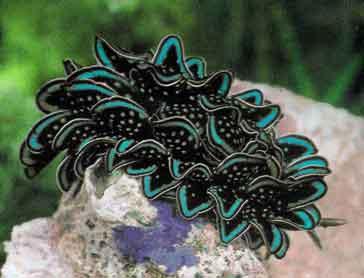I've been stewing on this story for a couple of weeks now, trying to determine what I think about it. Further thoughts on the subject were sparked by a brief discussion with my philosophy teacher as I drove her home last week, after a class of which aesthetics and the philosophy of art was the subject. In class, we had discussed the definition of art, and words like "creativity", "intention", "evocative" and "emotion" were tossed around. For the purposes of philosophising, we decided that anything that is considered an artwork is fair game. But can the work of a two-year-old be considered art?
My initial reaction was ambivalent: a two-year-old could have little intention of "making art" as opposed to "playing with paint and canvas", which works against the idea of it being art. On the other hand, even at two there can be an aesthetic sensibility; Aelita's paintings appear to show a rudimentary use of balance, proportion, colour and other appealing characteristics of abstract art. I would hang one on my wall, which makes it art by a broad definition.
In some ways the child's parents (also artists) are thumbing their nose at critics; deliberately poking out their tongue at the hackneyed phrase, "a child could paint that". By presenting Aelita's work as art, they are drawing attention to both the roots of abstraction (form over content) and the fact that, although a child could paint it, not every child can or will do so--artists are still an elite (or aelita). In this way, they are echoing Duchamp's Readymades (some of which we saw on the weekend in the National Gallery).
On the other hand, one must wonder whether a two-year-old's work is different from a painting by a chimp or an elephant, both of which have recently been exhibited and bought by galleries and collectors. What is the elephant's intention, or the two-year-old's? I am all for creative expression and art education in early childhood, but is it art?
Part of the problem, as well, is the element of deception involved. The paintings were presented as the work of an artist, and critics were initially not informed that the artist in question was slurping on a rubber teat as she worked. Postmodern theory would claim it doesn't matter (although in this case the artist is not so much dead as yet unborn). In this sense, it falls into the category of deception like the faux autobiography made famous by the case of Norma Khouri. The reason I felt ripped off by Forbidden Love was that it was boring and badly written; I felt I'd been tricked into reading it, when I would normally have put it down after the first chapter or two. I think this is how many people feel about Aelita Andre's art: they might have liked it well enough, but they don't like feeling tricked.
The last issue this case raises is of exploitation. Is Aelita really creating art for her own aesthetic reasons, or is her creativity being used by her parents to make a point of their own? Will Aelita one day look back on these paintings and regret her part in the controversy? These are echoes of the arguments used in the recent Bill Henson case, in which parents were accused of making bad decisions on behalf of their children. I wonder what Hetty Johnston thinks of this exhibition?
Speaking of Hetty Johnston, I didn't see her picketing the Degas exhibition at the National Gallery, where sculptures, drawings and paintings of nude adolescents proliferate. Degas' study of a 14-year-old dancer is no less naked--and evocative--than Bill Henson's portraits. Of course, the original sculpture, clothed and with real hair, caused a controversy in its time too. In a lovely but almost accidental juxtaposition, a set of Henson's Paris opera images hangs only two rooms away from the Degas collection.
Monday, January 19, 2009
Subscribe to:
Post Comments (Atom)

No comments:
Post a Comment